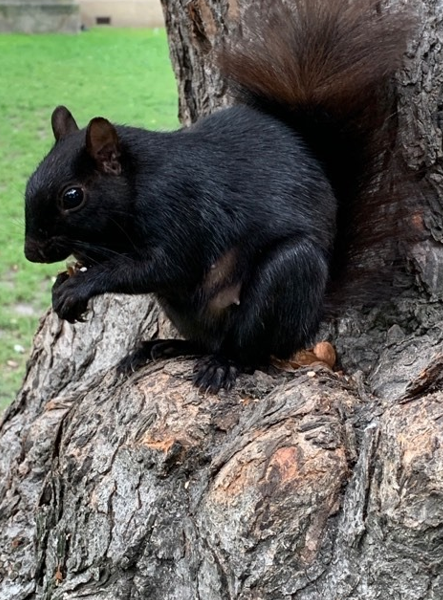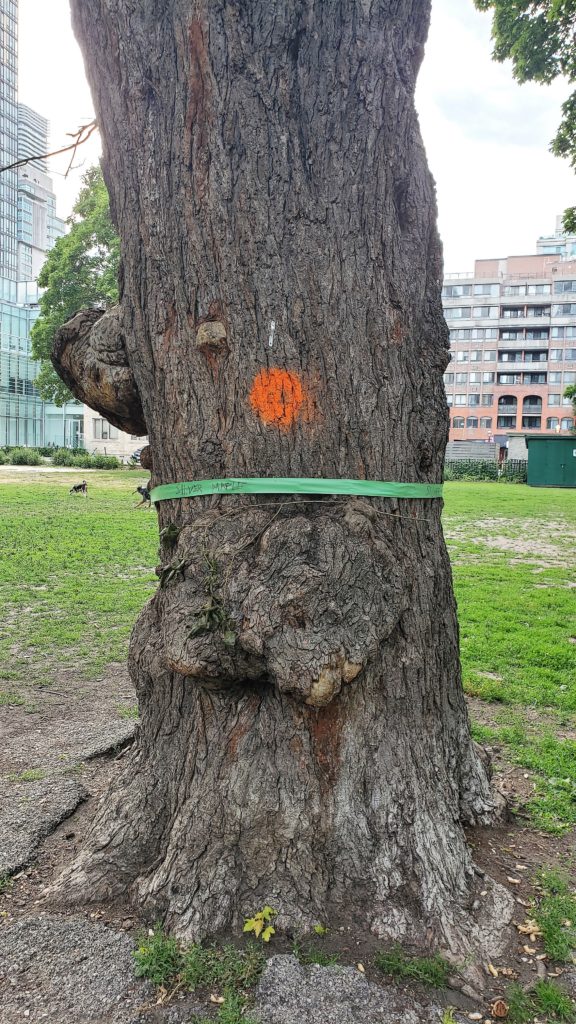
The tolling bells of St. James Cathedral that solemnly mark the end of a life have lately also rung for a departed guardian that has stood sentinel over the park and cathedral for over 140 years—the majestic Silver Maple on the cathedral’s east lawn. The tree, well-known for its immense size and many large burls, had reached maturity and been losing its limbs over the past few years. In May, the City of Toronto’s Urban Forestry department marked it with a fluorescent orange circle—a tree’s death knell—and it was felled in July.
This tree has been living on borrowed time. Silver Maples can live up to 130 years and we estimated this tree to be about 141 years old based on its circumference and a formula provided to us by a landscape architect (unfortunately, counting the tree rings was not possible).
When planted, in about 1881, it stood next to the commercial buildings that bordered the cathedral on the east. The tree would have been smaller then and overwhelmed by the commercial activity that was transforming the downtown from a quiet and predominantly residential city to a noisy coal-belching manufacturing centre.
This 1923 Goad’s Fire Insurance map indicates with a pointer the approximate location of the tree. The buildings to the east of the cathedral were demolished over a period from the early 1960s to the mid-1970s, and the streets were covered over.
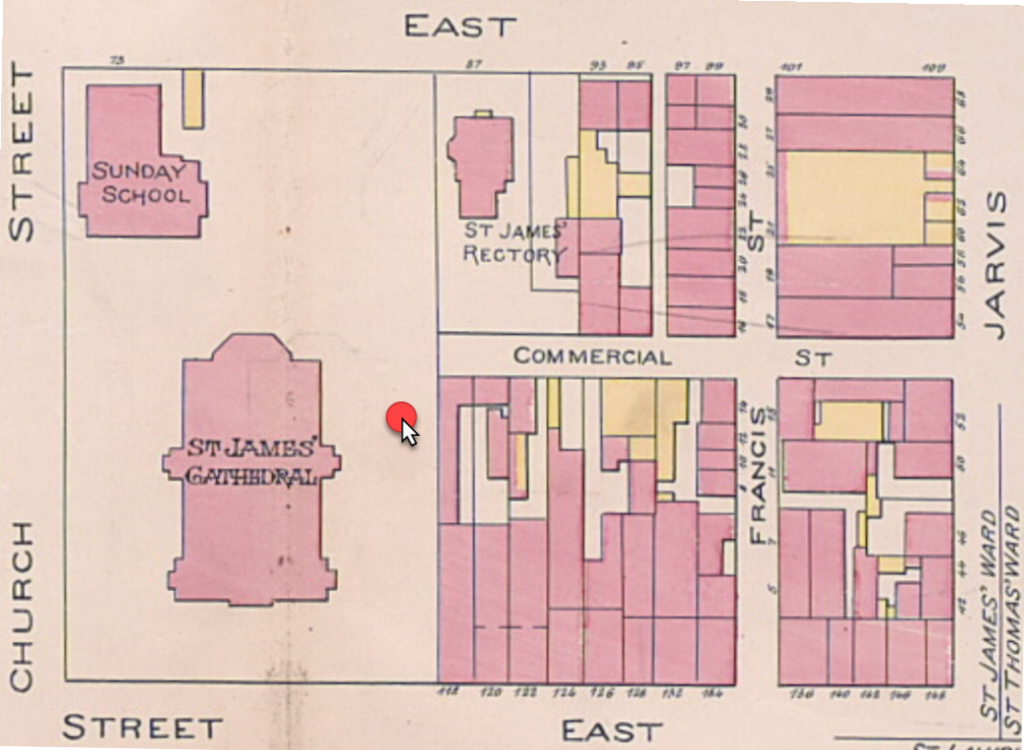
The foreground of this 1950s image looking northwest toward the cathedral, shows the fronts of the King Street commercial buildings that once stood where St. James Park is today. The Silver Maple would be tucked in behind these buildings.

It was not until the mid-1970s that the eastern half of the block was fully razed giving the tree room to grow. The park was design and renovated in the early 1980s. A few archival photos show the tree—its distinctive stance and pattern of branches. At one point the base of the tree was encased in asphalt and encircled by park benches.
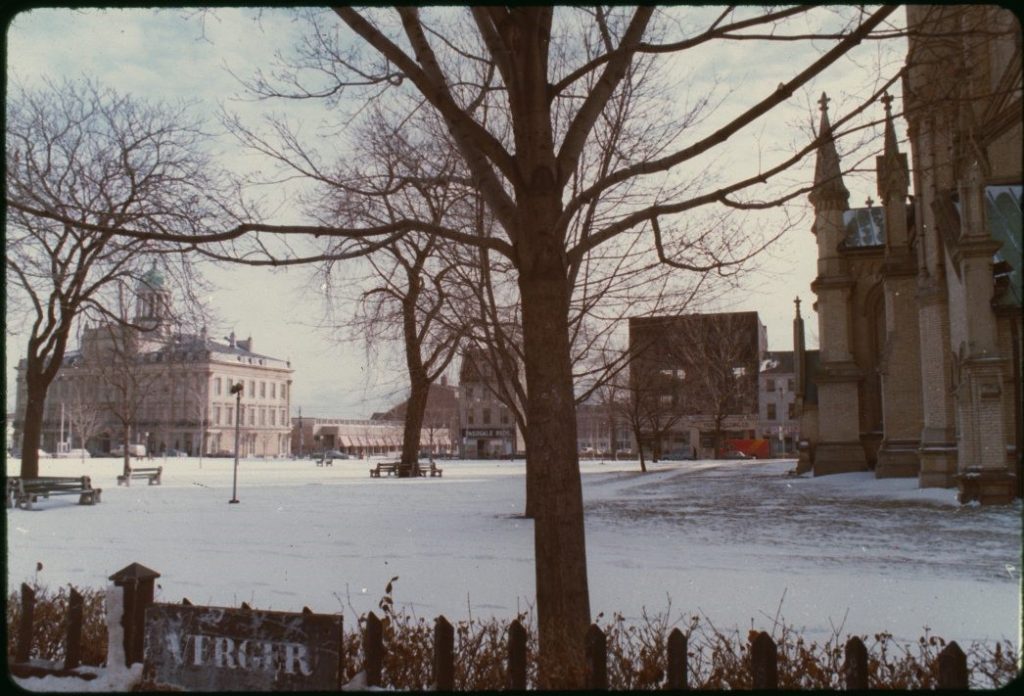

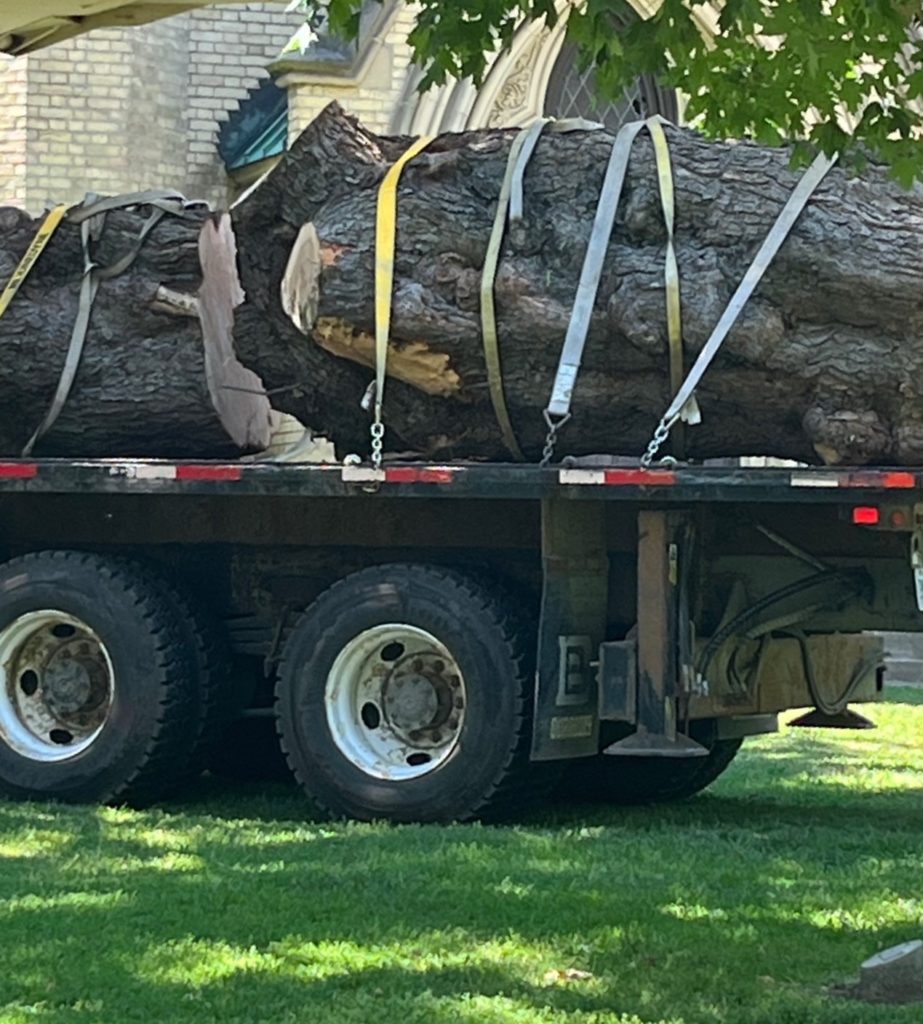
large flatbed truck was needed to cart away its massive trunk. The city’s practice is to use a stump grinder to churn out the roots to the depth of about one foot, and then fill and flatten the area. It will take about seven years for the now non-living roots to fully decompose. According to park staff, it is best to avoid replanting a new tree in the same spot of the old one as they do not fare well.
It is hoped however that a progeny of the old Silver Maple will be planted nearby. A friend of the Cathedral has collected 17 winged seeds from the original tree and is attempting to germinate and grow some saplings—all it takes is one!
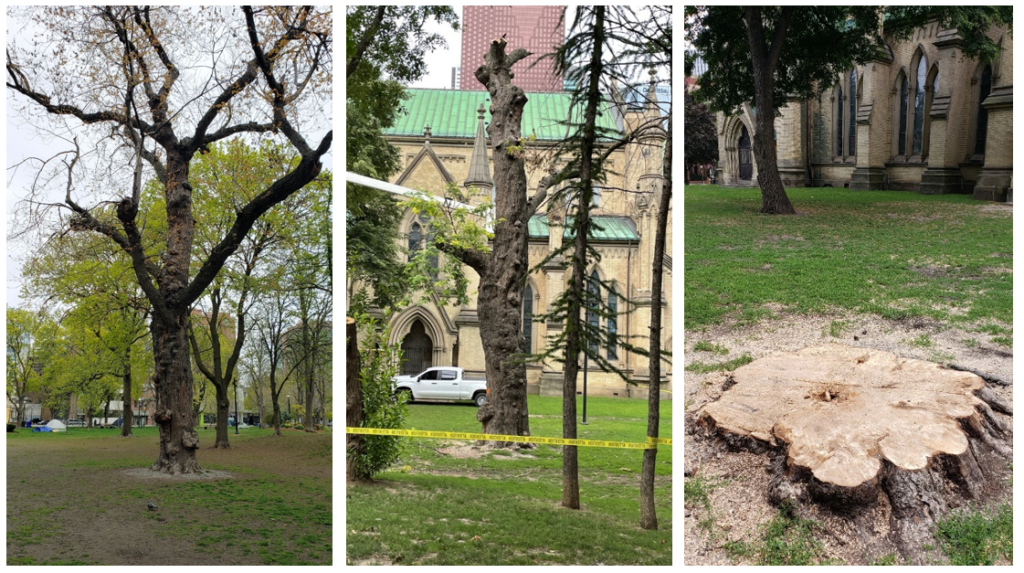
Despite the loss of its oldest tree, there are still many wonderful trees in St. James Park. Recently, we invited city arborist, Mark Sherman, to help identify some of the tree species in the park. The list is exhaustive including Norway and sugar maple, birch, Gingko, locusts, Kentucky coffee tree, red oak, maple ash dogwood elder, hackberry elm, horse chestnut, phew… weeping cedar, eastern red bud, don redwood, Katsura, pagoda dogwood, European beech, hazelnut, mountain ash, plane tree, and tamaracks (there are probably more)! The arborist explained that having a variety of trees in a small area is not typical nor sustainable in a natural setting because trees do best when they grow in groups and achieve a critical mass. The diversity here is perfect for a park—and we are lucky to have them!
